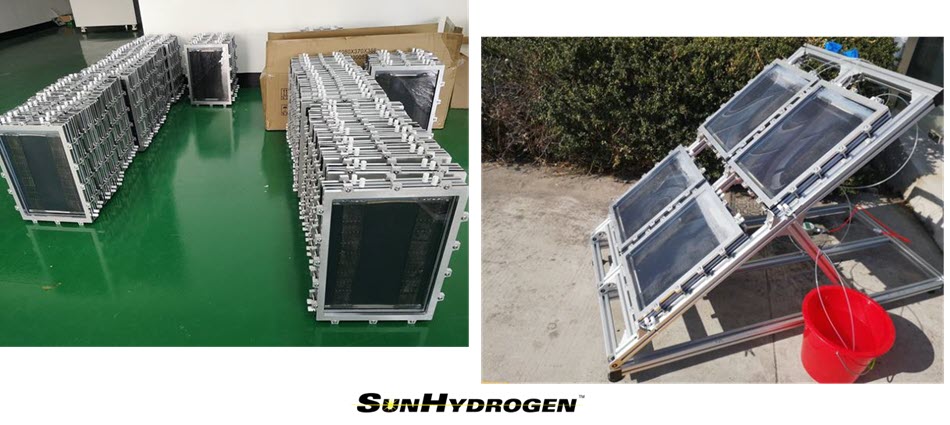
- Production is on track for beginning of Q2
SANTA BARBARA, CA– SunHydrogen, Inc. (OTC:HYSR), the developer of a breakthrough technology to produce renewable hydrogen using sunlight and water, today shared an update and published new, recently taken photos of its Gen 1 demonstration program units being assembled by Suzhou GH New Energy Tech Co. in Suzhou China.
Photos of the Gen 1 program units are shared with the public here, and images and video will continue to be added as they are made available.
“These images reflect the progress and strength of the working relationship we have established with Suzhou GH New Energy,” said Tim Young, CEO of SunHydrogen, Inc. “As SunHydrogen and its technologies grow in visibility within the energy and renewables sectors as well as global capital markets, it is important for us to ensure potential partners, customers and investors are informed of progress. Suzhou GH New Energy has performed the work on schedule, and has been incredibly insightful in overcoming the design issues we faced last year. We would also like to thank Suzhou Maimaosi Sensor Technology for their diligence and expertise in the electroplating process of the cells, and look forward to sharing additional updates as we determine possible demonstration sites.”
Gen 1 program technology uses multi-junction amorphous silicon solar cells, and is designed to provide a clear proof of concept and demonstrate the potential for scalable growth and commercial viability of the Gen 2 program. As shown in the images, SunHydrogen is completing the build-out of the 100 prototype solar hydrogen units that include proprietary solar cell assembly with applied coatings and catalysts, and the housing for safe hydrogen collection.
In 2019, SunHydrogen demonstrated 1000 hours of continuous hydrogen production utilizing Gen 1 cell technology, which allowed it to then focus on scaling up the technology. While the overall efficiency of the cells is low, SunHydrogen continues to gain significant and valuable insight during experimentation that it intends to leverage in the development of its Gen 2 nanoparticle technology. SunHydrogen anticipates completing the 100 demonstration units in the beginning of Q2 of 2021, enabling the Company to leverage them as further proof of concept as the Company looks to accelerate its nano-technology development.
SunHydrogen’s Gen 2 program is one that the Company believes is most economical from a technology and commercial viability standpoint. By gaining and leveraging insights from the Gen 1 program, Gen 2 technology is well positioned to attain three times the solar-to-hydrogen efficiency and represents a potential tipping point for market-changing hydrogen production.
About SunHydrogen, Inc.
SunHydrogen is developing a breakthrough, low-cost technology to make renewable hydrogen using sunlight and any source of water, including seawater and wastewater. Unlike hydrocarbon fuels, such as oil, coal and natural gas, where carbon dioxide and other contaminants are released into the atmosphere when used, hydrogen fuel usage produces pure water as the only byproduct. By optimizing the science of water electrolysis at the nano-level, our low-cost nanoparticles mimic photosynthesis to efficiently use sunlight to separate hydrogen from water, ultimately producing environmentally friendly renewable hydrogen. Using our low-cost method to produce renewable hydrogen, we intend to enable a world of distributed hydrogen production for renewable electricity and hydrogen fuel cell vehicles. To learn more about SunHydrogen, please visit our website at www.SunHydrogen.com.
Read the most up to date Fuel Cell and Hydrogen Industry news at FuelCellsWorks




